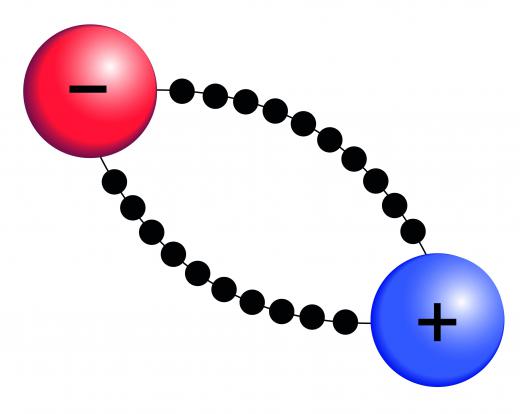What Is an Electrolytic Cell?
In an electrolytic cell, electrical energy is applied to cause a chemical reaction. Two metallic components called electrodes are usually immersed in a fluid, such as water. Each cell typically has one electrode called a cathode, which has a negative electrical charge, and an anode, which has a positive charge. The chemical reaction that takes place in an electrolytic cell is called electrolysis, which means a substance is being broken up. If water is the solution, then it will split up into hydrogen and oxygen gas as particles flow from the positive anode to the negative cathode.
Industrial as well as commercial facilities sometimes use an electrolytic cell to from oxygen and hydrogen gas from water. The cell can also be used for depositing one metal onto another during electroplating. Rechargeable batteries, such as nickel metal hydride or lead acid batteries, often behave like electrolytic cells. Energy reserves can be built up in these types of batteries by the process of converting electrical energy to chemical energy.

Batteries are typically voltaic cells which use chemical energy and convert it to electricity. A voltaic cell is also called a galvanic cell and generally uses the same metal for each electrode. Electrolytic cells, on the other hand, typically use one metal for the positive electrode, and a different metal for the other. These also need to be in the same solution for the reaction to take place. Galvanic cells can consist of two separate cells with a link called a salt bridge, which moves charged particles called ions from one side to another.
An electrolytic cell can be powered by a battery, with wires connected to each electrode to form an electrical circuit. One cell can also be connected to another, but each one generally needs a different voltage for anything substantial to happen. The electrolysis cell that has a higher voltage typically discharges in this circuit. A voltaic cell is created, while the cell with the lower voltage can gain a charge. This is typical of an electrolytic cell.
Water is often broken down into gases comprised of its molecular components with an electrolytic cell. Another compound used is sodium chloride, which can be broken down into chlorine gas as well as sodium ions; these usually combine with electrons released from the cathode. Sodium metal is deposited on the cathode as the ions and electrodes unite. Electrolytic cells are often used for refining metals and are generally a part of purifying aluminum, lead, zinc, as well as copper.
AS FEATURED ON:
AS FEATURED ON:











Discuss this Article
Post your comments